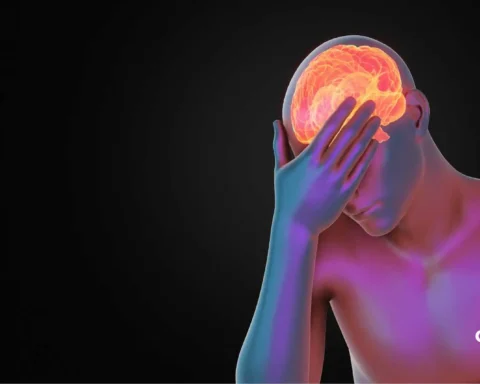Voice disorders can profoundly impact your quality of life, affecting both personal and professional communication. Recognizing the characteristics of voice disorders and taking timely medical intervention can prevent long-term damage. This article explores the characteristics of voice disorders that should never be ignored.
Table of Contents
According to the National Library of Medicine, voice disorders affect an estimated 20 million people (0.98%) in the United States. Vocal abuse is the leading cause among both adults and children. Among adults, the prevalence of voice disorder is observed in teachers, who are the most at-risk group.
A voice disorder is diagnosed when an individual expresses dissatisfaction with their voice, finding it unsuitable for their daily communication needs, regardless of whether others perceive it as normal or not (American Speech-Language-Hearing Association [ASHA], 1993; Colton & Casper, 2011; Stemple et al., 2010; Verdolini & Ramig, 2001).
Understanding How Your Voice Works
In the throat, the larynx (or voice box) is where most sounds come from. The vocal cords found in the larynx produce sound. When you talk, air goes into the lungs from outside and then passes through these vibrating folds called vocal cords, causing them to vibrate. Your voice’s identity is shaped by changing these waves made up of vibrations within this medium or between space (i.e., as they pass) between our senses and our organs of speech.
These vibrations create sound waves, which are then modified by the throat, oral cavity, and nasal passages to produce your unique voice. Your voice results from these vibrations that produce noise waves, which are then changed by the throat, mouth, and nasal passages. The quantity of air going through them, as well as the tightness and length of the vocal cords, control the pitch and loudness of your voice.
What are Voice Disorders?
Voice disorders occur when there is an issue with how your voice sounds or the vocal quality: it may be too loud or too soft, it may have a pitch that is not usual for you, or any other change in the way you speak or sing. They may result from congenital disabilities, language disorders, posttraumatic conditions, and peripheral neuropathies, among other factors. Hoarseness, breathing problems that make your voice sound weak or whispery, and strained sounds when you try to produce normal words are some indications that someone has voice disorders. Dysfunction can then lead to communication disorders, which can sometimes necessitate clinical intervention.
Categories of Voice Disorders
Voice disorders can be broadly categorized into three main types:
- Organic Voice Disorders: These involve structural abnormalities or physical changes in the vocal cords or surrounding tissues. Examples include vocal pathologies such as nodules, polyps, cysts, and laryngeal cancer.
- Functional Voice Disorders: These occur when the vocal cords are structurally normal, but there is improper use or function. Examples include muscle tension dysphonia and psychogenic dysphonia.
- Neurological Voice Disorders: These result from problems in the nervous system that affect voice control. Examples include vocal fold paralysis and spasmodic dysphonia.
Different Types of Voice Disorders
Some common voice disorders include:
- Acute or Chronic Laryngitis: Inflammation of the vocal cords, often due to infections or overuse.
- Vocal Nodules: Benign growths on the vocal cords caused by vocal abuse or misuse.
- Vocal Fold Paralysis: A condition where one or both vocal cords cannot move properly.
- Spasmodic Dysphonia: A neurological disorder causing involuntary spasms of the vocal cords.
- Muscle Tension Dysphonia: Excessive tension in the vocal muscles during speech.
Who Gets Voice Disorders?
Voice disorders can affect anyone, but certain groups are at higher risk. These include:
- Professional Voice Users: Singers, teachers, actors, and public speakers are more susceptible due to the high demands on their vocal cords.
- Smokers: Smoking irritates the vocal cords and increases the risk of voice disorders.
- People with Gastroesophageal Reflux Disease (GERD) or Laryngopharyngeal Reflux (LPR): Gastric contents moving upward to the larynx can lead to swelling and irritation of the laryngeal mucosa, resulting in the onset of voice symptoms.
- Individuals with Neurological Conditions: Diseases like Parkinson’s can affect voice control.
ALSO READ: Can You Optimize Your Wellness? Top Factors Affecting Wellness
5 Serious Characteristics of Voice Disorders
Let us look at the top 5 warning signs of voice disorders.
Persistent Hoarseness
A hoarse voice is a primary characteristic of voice disorder, often described as breathy, raspy, or strained. When the vocal cords are inflamed or irritated, it can lead to a hoarse voice. In general, hoarseness refers to unpleasant qualities such as decreased vocal volume and gravelly sound quality, harshness or roughness when speaking along high pitch variations are usually present too, and there may also be a strain on producing sounds. Causes for this include acute laryngitis, vocal fold nodules, polyps, or the most serious conditions of vocal cord paralysis and laryngeal cancer.
Symptoms: The manifestations of hoarseness are not uniform and may involve a sound that is breathy or airy, a decrease in volume, frequent voice breaks or fatigue due to talking, and a feeling of having a lump in one’s throat or experiencing pain during speech. Significant diminishment in terms of communication could result from these signs, together with a harsh or scratchy feeling at the back of the mouth.
What Does a Hoarse Voice Sound Like? A hoarse voice often sounds raspy or strained and may have a harsh or gravelly quality. This change in sound can be quite noticeable and may be accompanied by difficulty in modulating pitch and volume, leading to a less clear and consistent voice.
Causes: Hoarseness can be caused by various factors, including acute laryngitis, often due to a viral infection, overuse or misuse of the voice, such as yelling or singing, smoking or exposure to irritants, gastroesophageal reflux disease (GERD), allergies, thyroid problems, and neurological conditions affecting the vocal cords. Identifying and addressing the underlying cause is essential for effective treatment and voice restoration.
Vocal Damage
Vocal cords may show various symptoms, such as constant hoarseness, reduced vocal range, painfulness in conversing or singing, recurring throat clearing or coughing, and tightness or tiredness in the throat. Such signs may suggest that vocal cords are experiencing tension, hence eventual or constant impairment without attention.
Hyper-Functional Voice Disorder
A hyper-functional voice disorder occurs when there is too much tension in the vocal muscles while talking. It is marked by strained-sounding or tight-sounding voice quality, voice fatigue or stress after talking, more effort is required to speak, and pitch breaks or the varying tone might be other characteristics. Whenever stress comes up, most times, stressors make it worse; they might result in worse vocal straining if they are not handled carefully.
Functional Dysphonia
Dysphonia is a common characteristic of voice disorder that describes voice ailment, which is marked by loss of one’s voice. Hoarseness or roughness, running out of breath when speaking, making much effort when speaking, change of pitch and loudness levels within a given period are the characteristics that are found in people who are suffering from dysphonia. Some of the factors that could lead to dysphonia include misuse of the vocal folds, emotional traumas, organic defects, and structural disorders of the vocal folds.
In Children: Functional dysphonia in children is often a major characteristic of voice disorder, episodes of voice loss or whispering, normal voice during laughing or crying, and a voice that sounds effortful or strained during speech. Children with functional dysphonia may exhibit normal vocal function during non-stressful times but struggle with voice production in more demanding situations. Early intervention and voice therapy can help address these issues and improve vocal function.
Symptoms: You can identify functional dysphonia when your voice breaks frequently, there is a strain or effort during the speech, and your pitch of talking keeps changing, among others. Such symptoms may be due to psychological factors, which make it hard for one to know how best they could diagnose and cure it without carrying out some personalized therapy plans as well as getting their voice assessed properly.
Psychogenic Dysphonia
Psychogenic dysphonia is related to psychological factors rather than physical factors. Characteristics of psychogenic dysphonia include sudden onset following emotional or psychological stress, normal voice during non-stressful times, whispered or breathy voice, and the absence of vocal cord abnormalities upon examination.
Causes: Vocal cords that are overused or abused can lead to dysphonia, as well as psychological stress or trauma, developmental abnormalities in speech, and neurological damage, which could affect speech production; traumatic experiences such as accidents may cause dysphonia, too. For this reason, it is important to understand what is causing dysphonia before formulating a therapeutic strategy to manage or prevent it.
Effects of Voice Disorders
Voice ailments have a radical impact on a person’s life. This may relate to having trouble communicating with others, fewer professional or social encounters, fear or unhappiness, and reduced self-respect. Teachers, musicians, and people holding public offices might find it difficult to ply their trades because their voice is their tool. Hence, detecting and treating these problems before they become permanent is essential.
Repairing a Damaged Voice
Repairing a damaged voice involves several strategies, including voice rest to allow the vocal cords to heal, staying hydrated to keep the vocal cords moist, using humidifiers to add moisture to the air, avoiding irritants like smoking and alcohol, and engaging in voice therapy with a speech-language pathologist to improve vocal techniques. In some cases, medical treatment, including medication or surgery, may be necessary to address underlying conditions.
A simple treatment for hoarseness demands lots of voice rest, taking in a lot of water and herbal teas to stay fresh, avoiding whispering that strains the vocal cords, using steam inhalations/humidifiers for soothing the vocal cords, and not taking caffeine and alcohol which make the vocal cords dry or have it in them, seek advice from a doctor when the condition does not go away after weeks. Prevention is better than cure; quick action ensures that all stays well.
Diagnosis and Treatment
Diagnosis: Evaluation of voice disorders can be done by using a systematic review of patient history, physical examination, and specialized tests. An otolaryngologist (ENT specialist) may use a laryngoscope to visualize the vocal cords and assess their function.
Aerodynamic assessment is utilized to measure and evaluate the airflow and air pressure involved in the production of voice. It provides quantitative data on how efficiently the respiratory system supports vocalization and how effectively the vocal folds convert airflow into sound.
Additional tests like acoustic analysis, stroboscopy (a technique used to visualize vocal fold vibration), and voice evaluation by a speech-language pathologist can provide detailed information about the voice disorder.
Treatment: Treatment for voice disorders varies based on the underlying cause. Common treatments include voice rest, hydration, and avoiding irritants for mild cases, auditory masking, speech therapy with a speech-language pathologist to improve vocal techniques, and even facial expression, medical treatments such as medications for infections or acid reflux, and surgical treatment for structural abnormalities like vocal fold lesions, nodules, or polyps.
Prevention and Prognosis
Many voice disorders can be prevented by adopting healthy vocal habits. These include staying hydrated, avoiding excessive vocal strain, not smoking, managing acid reflux, and practising proper vocal techniques, especially for professional voice users. Regular voice check-ups and early intervention can also help prevent more severe voice issues.
The prognosis for people with voice disorders varies depending on the type and severity of the disorder, the underlying cause, and the timeliness of treatment. With appropriate medical intervention, voice therapy, and lifestyle changes, many individuals can recover fully or manage their symptoms effectively. Early diagnosis and treatment are crucial to improving outcomes and maintaining vocal health.
ALSO READ: Can You Optimize Your Wellness? Top Factors Affecting Wellness
Conclusion
Recognizing the characteristics of voice disorders is vital to diagnosing them in the initial stages for effective treatment. Voice disorders can highly affect communication, meaning awareness and intervention should be urgently done. If you have any of these worrying characteristics, ensure that a healthcare expert looks at them so that they can be controlled and handled well.
FAQs
What Is the Difference Between Dysphonia and Functional Aphonia?
Dysphonia refers to any impairment in voice quality, including hoarseness, breathiness, or strain. On the other hand, functional aphonia is a severe form of voice disorder where the individual loses voice, often due to psychological factors. Both conditions require different therapeutic approaches to restore normal voice function.
What Is the Most Common Symptom of All Voice Disorders?
Hoarseness is the most common symptom across various voice disorders. It is often the first noticeable sign that something is wrong with the vocal cords, prompting further investigation and treatment.
What Are the Characteristics of Spasmodic Dysphonia Voice?
Spasmodic dysphonia is a neurological disorder characterized by involuntary spasms of the vocal cords during speech, leading to a strained, choppy, or breathy voice. These spasms can cause interruptions in speech flow, making communication difficult and frustrating for those affected.









